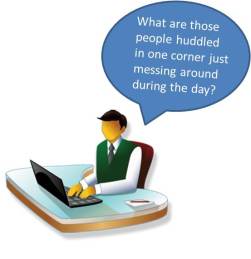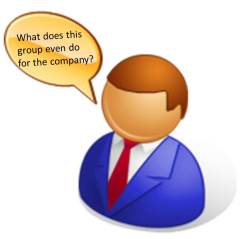 “He puzzled and puzzled til his puzzler was sore. Then the Grinch thought of something he hadn’t before.” Dr. Seuss, author of How the Grinch Stole Christmas.
“He puzzled and puzzled til his puzzler was sore. Then the Grinch thought of something he hadn’t before.” Dr. Seuss, author of How the Grinch Stole Christmas.
“CHI-E is an innovating idea coming out through deep thinking or racking your brain.”
Mr. Ohno, creator of the Toyota Production System (TPS).
When I was a child, my favorite stories were about creatures or kids getting into some sort of mischief by being curious enough to investigate things. They were my heroes by night and role models by day. The red clay hills across from my house became all kinds of mysterious structures for hidden treasure, monsters and small castles. My brothers and I were pirates, dragons and armies. When I made it to my bed at night, I read stories of adventure and voyages that fueled my endless imagination. Many thanks to Curious George, Nancy Drew, the Cat in the Hat, Huck Finn and many more.
I couldn’t know that I would still get to imagine, experiment, role model and build things out of cardboard, tape and string as an adult but that is an expression of how we show our CHI-E spirit. Most of you have heard of kaizen spirit but what is CHI-E spirit? I will leave the definition to the creator of it, Mr. Ohno:
“CHI-E is an innovating idea coming our through deep thinking or racking your brain. Talent to create CHI-E is given to everyone in the universe.
However, it does not come out when you try to stick to your knowledge, common sense or when you are comfortable in your current environment.
As long as people strive to create his/her own CHI-E with challenge, he/she will be developed and become stronger. Finally, a strong organization will be established.”
You’ve probably experienced or heard that one joy of having children and grandkids, is that you get to be a kid again yourself. If you are playing with the little ones, it is okay to pretend, imagine and try new things that might fail. If they fail, you get to have a belly laugh.
You can do this at work too if we practice CHI-E, imagining a new way to make a process or tool, conducting trials that may not work but will lead you to a better discovery, pretending you are a flowrack or conveyor to see if that would work better than what you have now. It is all about imagining a better way without giving up. The bonus is that many of our organizations want us to do this work. I hope yours is one of them.
I believe in this 100% because I have experienced the rewards and seen it happen for others. Each day as I struggle to figure out how to apply, explain or share some aspect of the Toyota Production System, I practice CHI-E. The people who work around me can tell how strong my CHI-E level is by the brightness of my red, Irish face.
One of Mr. Ohno’s points about CHI-E that connects most strongly with me is that everyone has this capability. It is just a matter of how much we believe in and encourage the behavior. As you think about the CHI-E concept, challenge yourself with these questions:
- Do you believe that EVERYONE has the capability to practice CHI-E or is it a certain percentage in the organization? This is a hard one—you know what should be said but what do you really believe, deep in your heart?
- How does CHI-E demonstrate trust of an employee, in your opinion and experience?
- Have you given someone a chance to practice CHI-E and protected their time to let them see it through?
I am convinced that people find me a little eccentric for how hard I practice CHI-E and expect the same of others. However, I am happy to follow Mr. Ohno’s CHI-E concept, racking my brain and developing new things to make the workplace better. If you are tempted to dismiss this behavior as that of a total convert to TPS, I can tell you that some of the most hard-nosed, no nonsense managers that resist many aspects of TPS, have found this to be a practical way to unite their operations toward daily improvement.
How about giving it a try?
– Lesa
Read Full Post »








